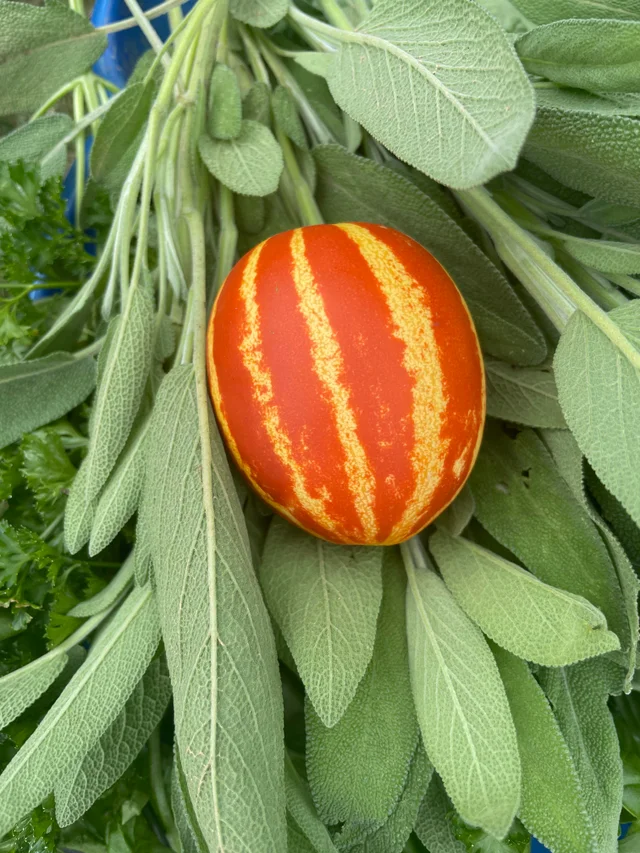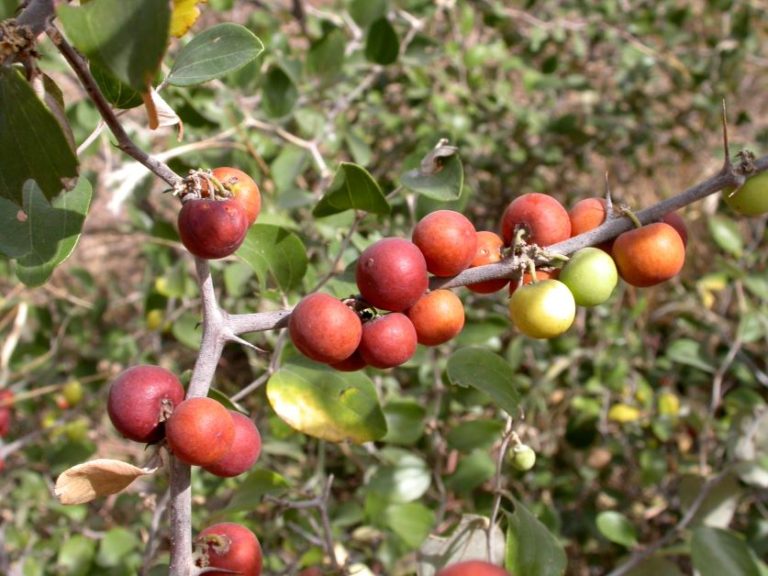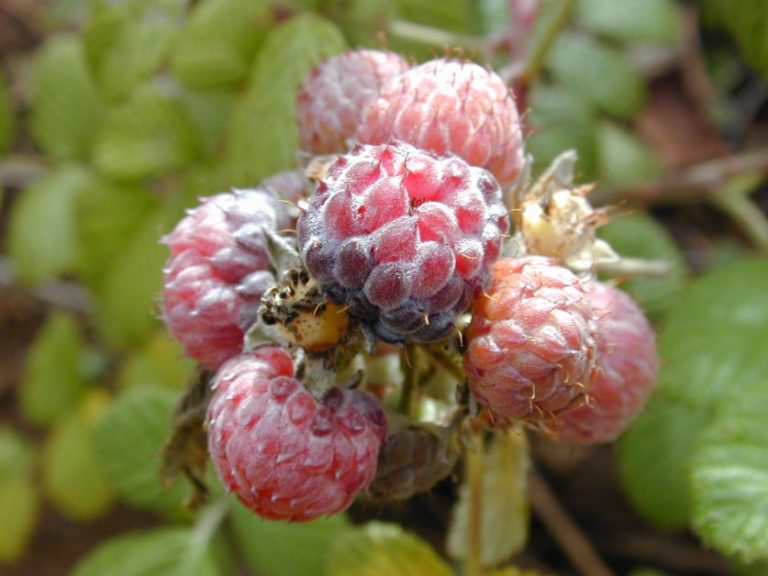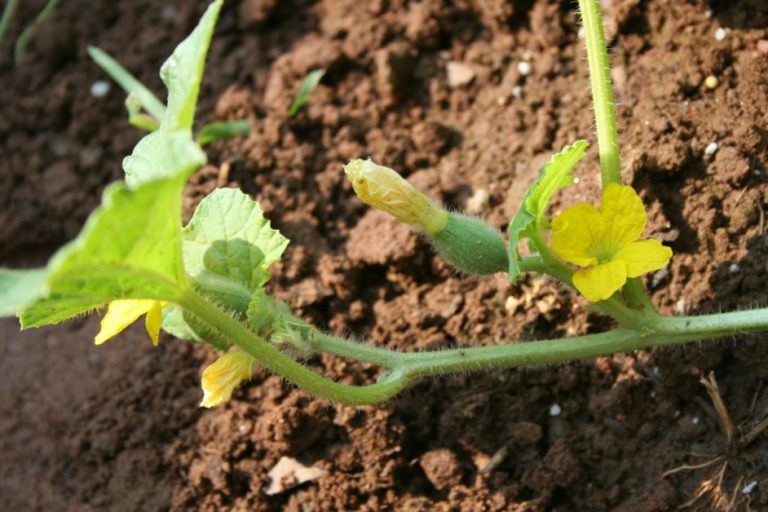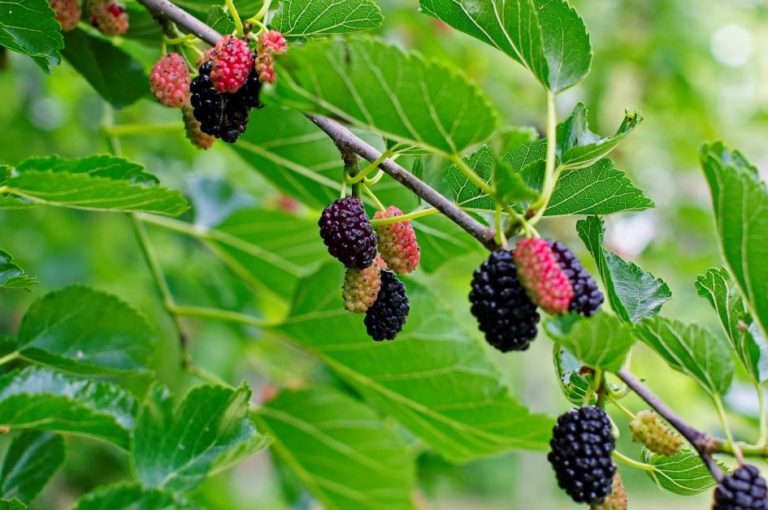Tigger Melon Growing Guide
If you’re new to gardening and want to try your hand at growing melons, the tigger melon is an excellent choice. Also called tiger melon, this is a fast-growing fruit popular for its bright orange stripes. The tiny tigger will fit in the palm of your hand and usually tops out at about 1lb. Not only is tigger melon is easy to grow, but it’s especially prolific, too. Some gardeners claim to have harvested 10 fruit per vine!
From seed to harvest, this tigger melon growing guide will tell you everything you need to add this super fun heirloom to your garden this season.
What does tigger melon taste like?
Tigger melon tastes like mild honeydew. They are juicy and firm and as a bonus, the seeds are small and tender enough to eat. Like most other melons, though, the rind is inedible.
Some tigger melon seed reviews say that the tigger melon is a little flavorless, but that hasn’t been the case for me. I’ll give you a trick later on in this guide that will help make your melons super sweet, regardless of variety.
When to plant tigger melon in Florida?
[table id=16 /]
How do you plant tigger melon seeds?
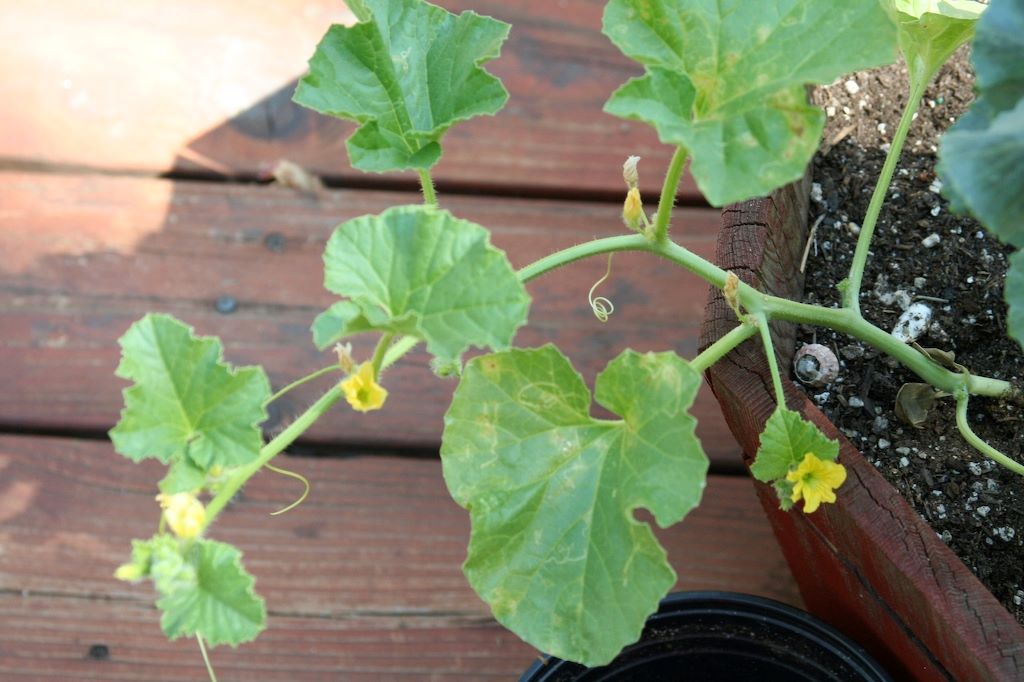
You can plant tigger melon seeds by direct sowing or by transplanting. Do note, though, that much like their cucurbit cousins cantaloupe, kabocha, Seminole pumpkin, and cucumber, tigger melons have a sensitive root system. Take care when transplanting and don’t try to move your plant once it’s established.
How do you transplant tigger melon?
- Fill seed starter cups with high-quality potting mix.
- Plant 1 seed per cut about ½ inch deep. Plant more seeds than you think you need in case of a low germination rate.
- Water your seeds well and keep the soil moist but not soggy.
- Keep your starter pots in a warm, sunny location that is at least 75°F. I keep my seedlings in my carport where they can get natural light and fresh air but are still protected from the harshest rays of the sun.
- When your tigger melon seedling has 2 to 3 true leaves, it’s ready for transplanting.
- To reduce the time your tigger melon plant roots are exposed to the open air, dig your hole first before removing your seedling from its cup. Plant your seedling as deep as the first set of true leaves and water it thoroughly after transplanting.
How do you direct sow tigger melon?
Many gardeners prefer to plant their tigger melons by “hilling.”
- Create a row of mounded dirt 3 to 4 inches high. Instead of rows, you can also make create individual hills.
- Plant seeds 1 inch deep, keeping each seed 18 inches apart. If planting multiple rows, keep rows 4 feet apart.
- Water your seeds after planting and until your plants are established, keep the soil moist but not soggy.
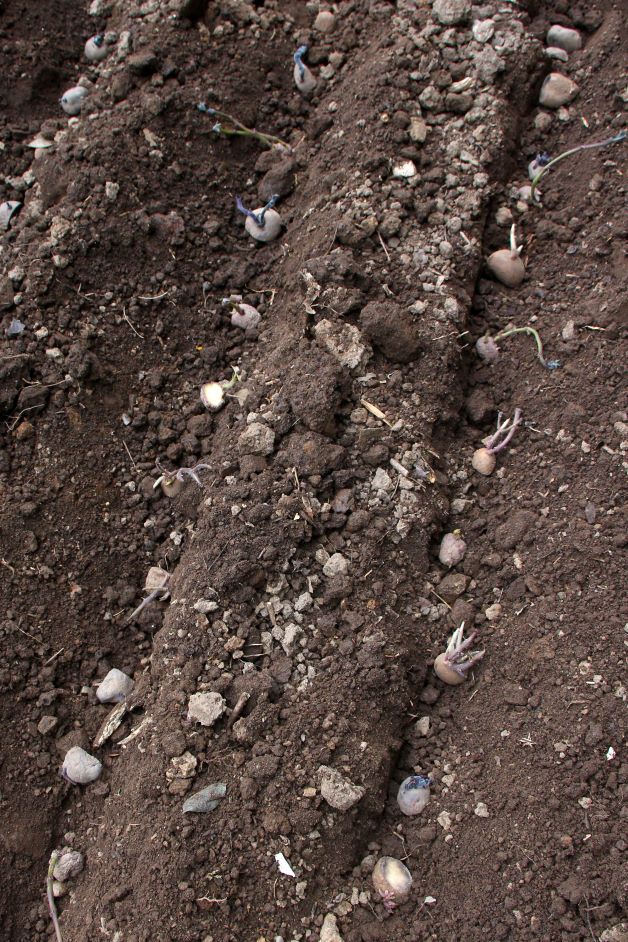
Tigger melon growing conditions
Light
Tigger melon is a full sun plant that needs 8 hours of sunshine a day.
Temperature
Tigger melon grows best when the temperature is 75°F to 90°F. The tigger melon USDA hardiness zone is 4 through 10, and it’s an annual plant. After harvest and when the weather gets cooler in fall, your plant will die and you’ll have to replant it next season.
Water
Compared to other melon varieties, tigger melon prefers to be a bit drier. How much water your tigger melon needs also depends on what stage of growth it’s in.
Directly after sowing or transplanting, keep the soil moist but not soggy. After your melon is established, give it about an inch of water per week. If it’s especially hot and dry, however, your melon might need more water. When in doubt, do the touch test – stick your finger into your soil and if it’s dry up to your 2nd knuckle, you should give your plant more water.
When watering your tigger melon plant, it’s important to water it at the base and not from overhead or on the leaves. Watering from overhead will cause your plant to contract powdery mildew.
I promised to tell you a trick to make your tigger melons sweeter than average, and here it is: after your tigger melons have set fruit and about 2 weeks before they’re ready for harvest, stop watering your plant. This will increase your fruit’s sugar content and make it less watery and bland.
Soil
Tigger melons prefer well-draining, fertile soil with a soil pH of 6.
Spacing
Tigger melons are climbing vines that need room to roam. Tigger melon spacing should be 3 to 4 inches apart per plant.
Fertilizer
If you use a fertilizer that has too much nitrogen when growing tigger melons, you will end up with more foliage than you will fruit. For best results, feed tigger melons an organic 5-10-10 fertilizer according to the directions on the package.
Pruning
Removing excess foliage from your tigger melon plant can help improve airflow and cut back on fungal disease. As your tigger melon grows during the season, you’re likely to contract powdery mildew. Unfortunately, this is almost inevitable in Florida. Remove heavily infected leaves to keep your plant as healthy as possible for as long as possible.
Some people also remove some flowers from their tigger melon vines. Although this will give you fewer melons to harvest, some say that the melons that grow will be sweeter than normal because your plant is focusing extra energy on the fruit it does have.
Tigger melon flowering
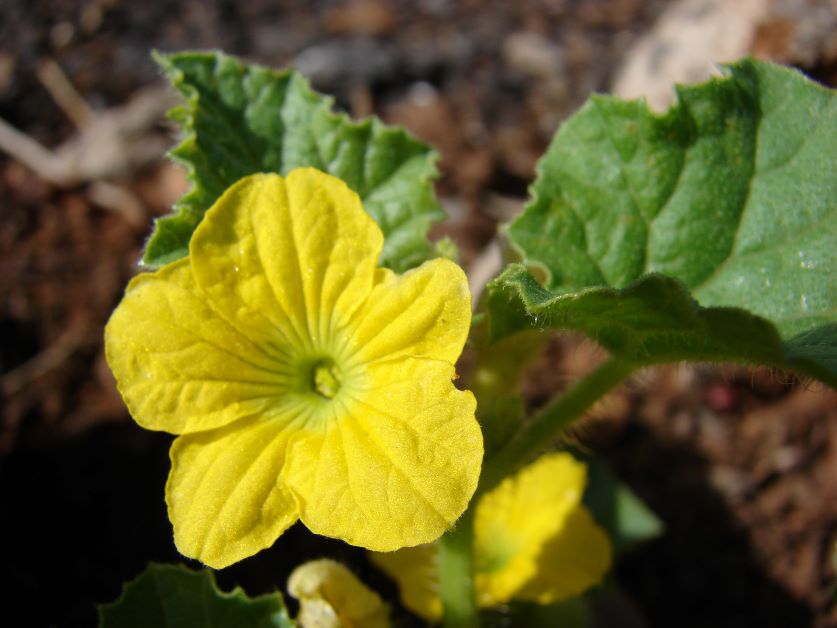
Your tigger melon will most likely put out male flowers first, with female flowers following soon after. Only the female flowers will turn into melons. You can tell the difference between male and female melon flowers by looking at their base — female flowers have tiny, baby melons underneath them and males do not.
Bees love melon flowers but if your garden lacks pollinators, you may want to hand-pollinate. To hand pollinate melons, take a clean toothbrush and gently rub it on the inside of a male flower to collect pollen. Then, rub this pollen on the inside of the female flower. If your melon starts to grow but falls or rots off before it reaches full size, this is a sign of incomplete pollination.
How do you know when tigger melons are ripe?
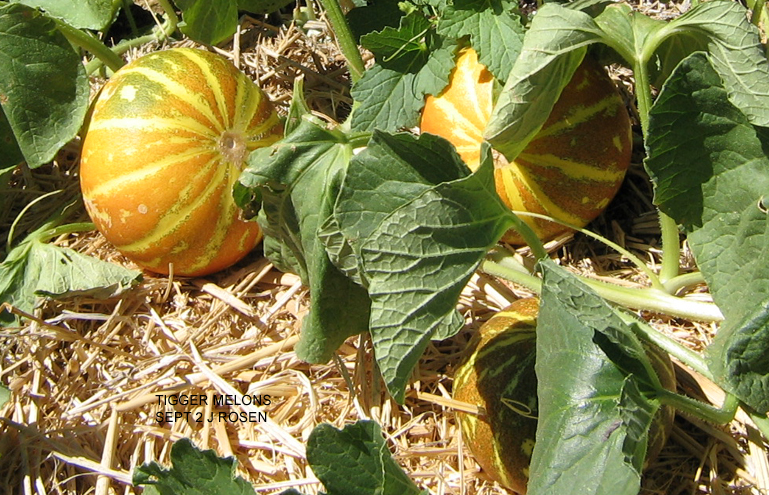
With some melons, you can tell that they are ready to pick based on how fragrant they are. This isn’t necessarily a good indication of ripeness for the tigger melon, though. Tigger melons are really fragrant, and sometimes so much so that they will start smelling sweet before they’re ready to pick. Instead, give your tigger melon a gentle tug. If it slips off the vine with little to no resistance, then your tigger melon is ready to harvest. Otherwise, leave it on the vine for a few more days and try again.
Tigger melons take 90 days to go from seed to harvest.
Can you grow tigger melon containers?
Tigger melon grows great in containers as long as you know that your melon vine will still need room to sprawl, so put your container next to a trellis. If you’d rather let your melon crawl along the ground, you may want to put a small pot under each melon to keep it elevated and away from pests.
A 5-gallon pot or DIY grow bags make great tigger melon containers. Whichever container you decide, fill it with potting soil and a little bit of perlite or sand to improve drainage. Containers also tend to dry out quicker than the ground, so take care to keep a close eye on your plant and water as needed (but be careful not to overwater, either).
When I grow melons in containers, I like to use organic fruit fertilizer spikes since they are slow-release and you should only need to place one in each pot per season.
Can you grow tigger melons in raised beds?
Yes, you can grow tigger melons in raised beds. Just be sure to follow the same planting guide as if you were planting them in the ground. All varieties of melons grow great when I fill my metal raised garden beds with equal parts potting soil, mushroom compost, and sand.
How do you grow tigger melons on a trellis?
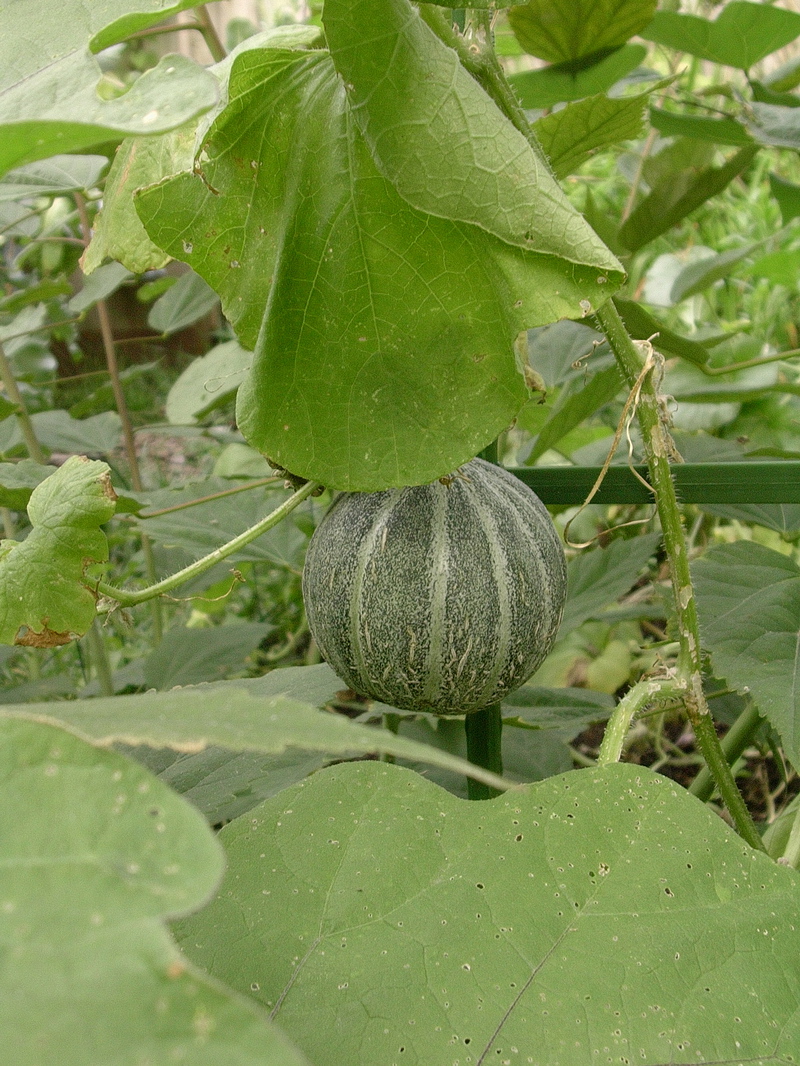
I highly recommend growing your tigger melons on a trellis. Trellising tigger melon keeps your fruit off of the ground (and away from pests) and also helps improve airflow between its leaves.
There are a few different styles of trellis you can choose when growing tigger melon:
- DIY garden fence to grow tigger melon horizontally
- A-frame trellis to grow tigger melon vertically
- Arch trellis to grow a melon tunnel
Whichever trellis you choose is a personal preference and also depends on how much room you have in your garden. The most important thing to remember when growing melons on a trellis is to move your trellis to your plant instead of uprooting your plant and moving it to your trellis. Install your trellis first and then direct sow or transplant your tigger melon about 3 inches away from the trellis.
As your plant grows, you may need to guide the vines to grow up the trellis. Tigger melons are a natural climber, though, and once it finds the trellis, they should have no problem growing up it. Unlike when you’re growing sugar baby watermelon, you won’t have to support your melons with a sling. Tigger melons are small and have vines that are strong enough to support them without help.
Troubleshooting
Tigger melon pests
Whitefly
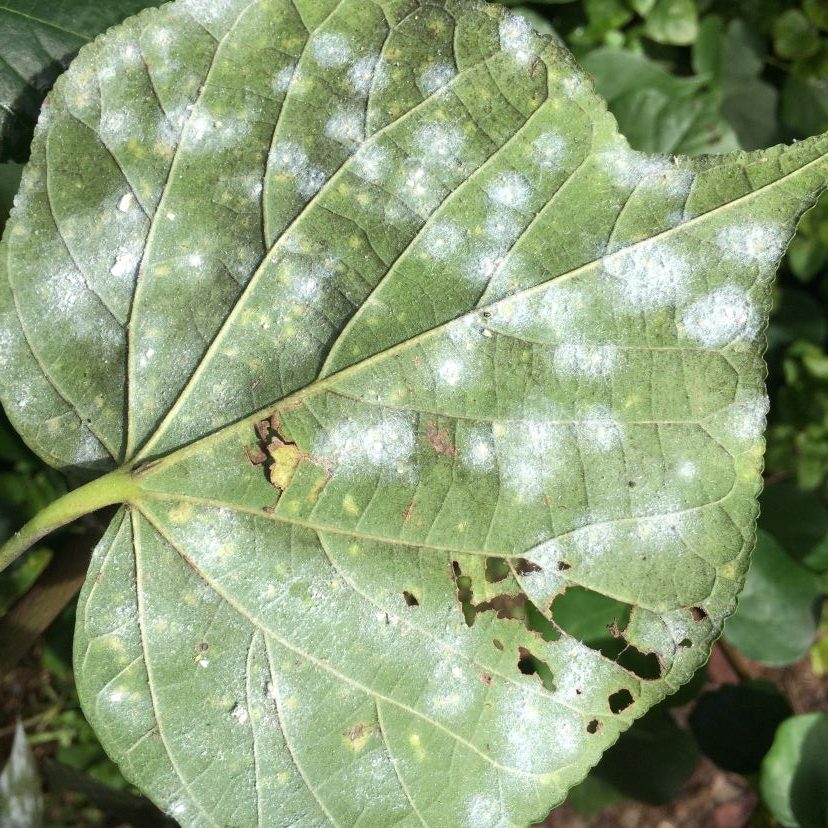
- Looks like: tiny moth-like bugs that look like powdered sugar dusted on stems and under leaves
- Damage: sucks nutrients from your plant, transmits viruses, causes sooty mold
- Treatment: insecticidal soap
Pickleworm
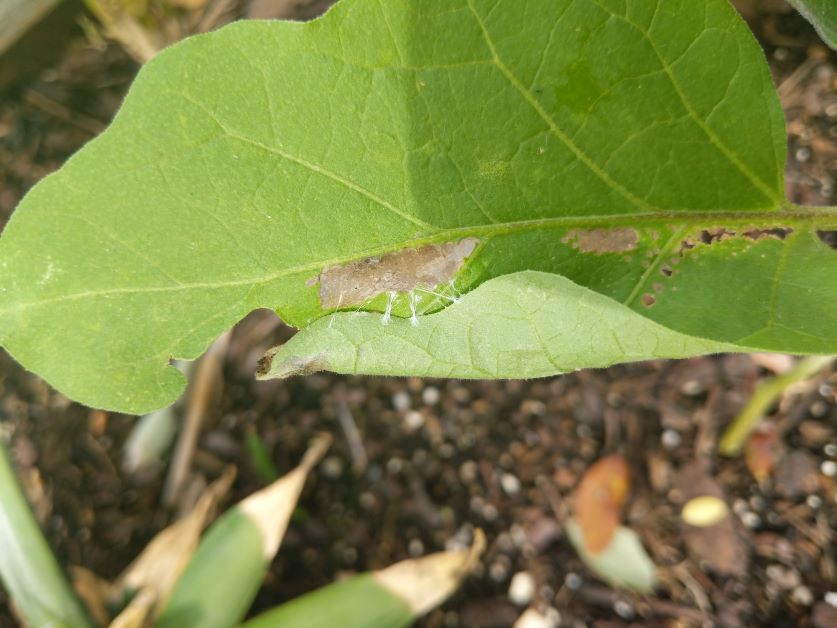

- Looks like: small green worms; they like to make pockets for themselves in foliage by using webbing, so looked for leaves that are folded over themselves
- Damage: bores holes into your fruit, vines, and flowers
- Treatment: pick them off by hand; Monterey b.T.
Leafminers
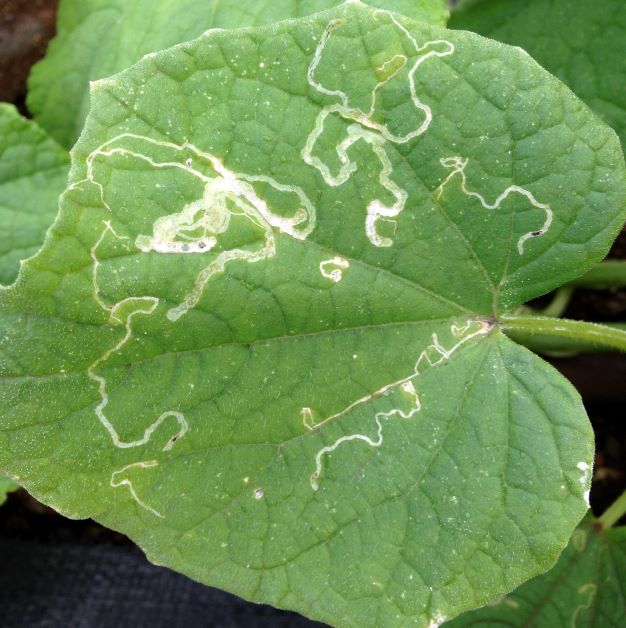
- Looks like: leafminers are usually too small to see, but their damage is distinct – look for white trails on your foliage
- Damage: unless the infestation is extreme, leafminer damage is nothing to worry about on a cantaloupe plant
- Treatment: spinosad
Aphids
- Looks like: small, green (or orange) soft-bodied insects; clear droplets of sticky liquid on leaves and stems, called honeydew (aphid excrement)
- Damage: yellow leaves, curled leaves, stunted growth, generally unhealthy plants
- Treatment: treat for ants; blast the aphids off with a spray from your hose
Tigger Melon Diseases
Powdery mildew
- Looks like: white patches of white, dusty mold on leaves and stems; entire leaves look like they’re covered in white dust in extreme cases
- Damage: flowers will fall off; underdeveloped fruit; generally unhealthy plants; death
- Treatment: prevent by keeping leaves dry and spraying organic copper fungicide early in the season; remove infected foliage; remove debris from garden beds; make sure plant gets enough sun and airflow
Downy mildew
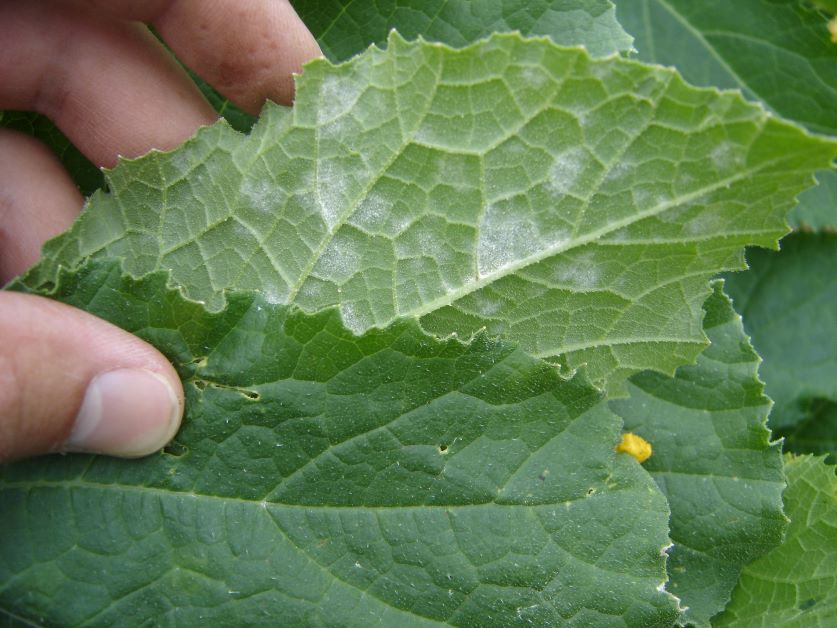
- Looks like: brown patches on leaves; leaves may turn crispy and fall off; patches of blue-ish white mold under leaves
- Damage: flowers will fall off; underdeveloped fruit; generally unhealthy plants; death
- Treatment: prevent by keeping leaves dry and spraying organic copper fungicide early in the season; remove infected foliage; remove debris from garden beds; make sure plant gets enough sun and airflow
Gummy stem blight
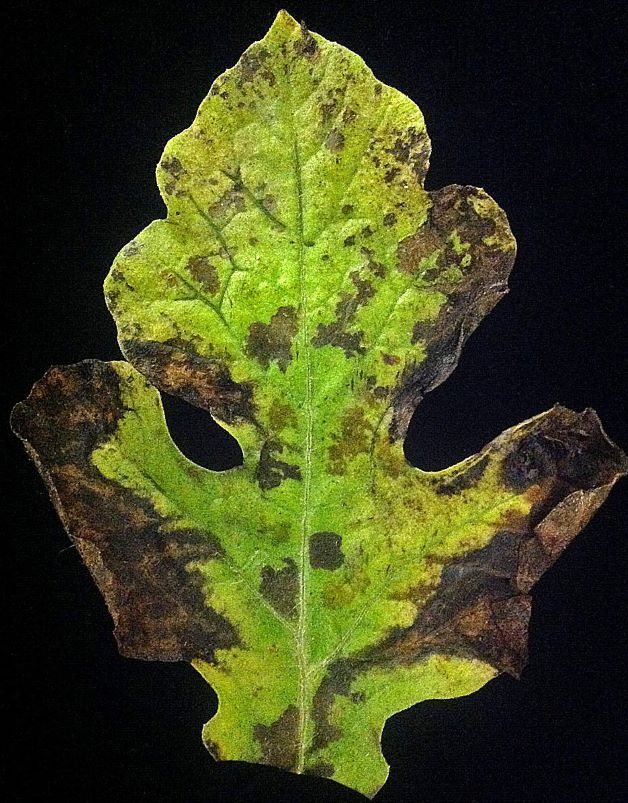
- Looks like: yellow leaves; brown crunchy spots on leaves; wilted plants; mushy stems; rotted spots on fruit
- Damage: plant death
- Treatment: prevent by rotating crops, keeping garden free of debris, and by inspecting seedlings and destroying ones that show signs of gummy blight; early season treatment of organic copper fungicide
Anthracnose
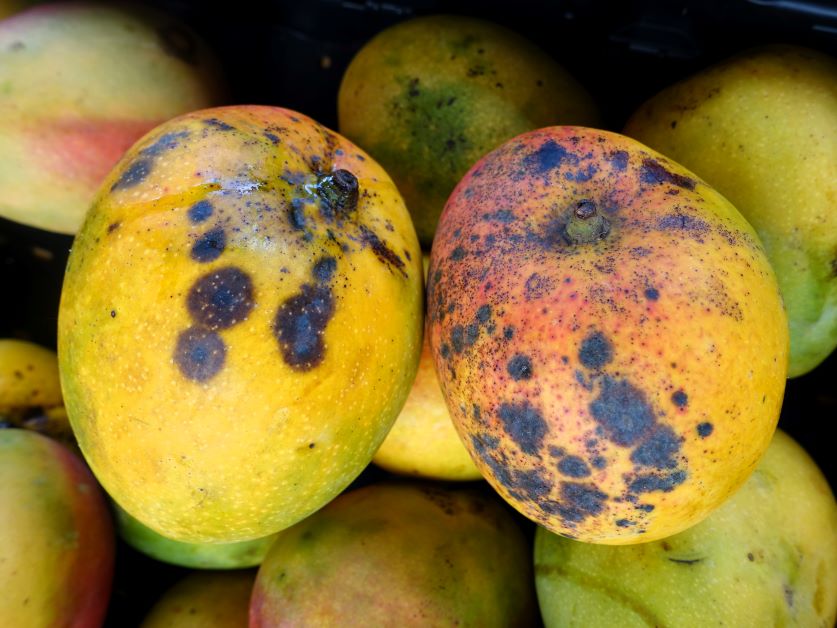
- Looks like: black spots on leaves, stems, and fruit, leaf drop
- Damage: wilted leaves; rotting fruit
- Treatment: early season treatment of organic copper fungicide; keep garden free of debris; put a barrier between your fruit and the ground; make sure soil is well-draining; keep leaves dry

